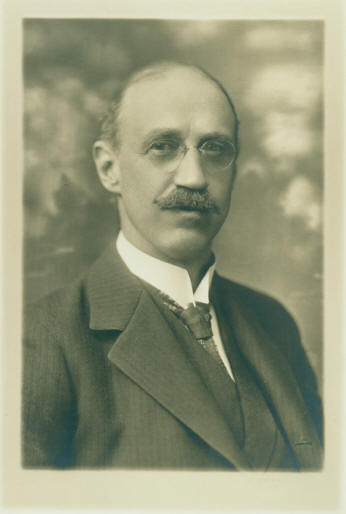Queer Places:
39 Beacon Street, Boston
Harvard University (Ivy League), 2 Kirkland St, Cambridge, MA 02138
8 Park Street, Boston
3 Spruce Street, Boston
Mount Auburn Cemetery
Cambridge, Middlesex County, Massachusetts, USA
 William Sumner Appleton Jr. (May 29, 1874 – November 24, 1947) was founder of the Society for the Preservation of New England Antiquities (SPNEA) in 1910. He was the chief force behind much of the preservation of historic homes in the New England area.
He was a member of the Horace Walpole
Society, elected honorary member in 1943. Most of his personal papers
were destroyed following his death, probably to straightening his biographical
record. Appleton's culture-keeping vision was not satisfied by museums and
archives. Convinced of the need for a concerted program to protect New
England's historic houses in situ, he corralled 17 of his friends to found the
Society for the Preservation of New England Antiquities (SPNEA) in 1910. The
founding group included one woman and 17 men, with many ministers, former
ministers, and seminarians among them. Within a year, the SPNEA bought its
first property, a XVII-century Massachusetts house. Over the next 36 years the
group acquired 50 more properties in five states, most of them houses from the
XVII and XVIII centuries.
William Sumner Appleton Jr. (May 29, 1874 – November 24, 1947) was founder of the Society for the Preservation of New England Antiquities (SPNEA) in 1910. He was the chief force behind much of the preservation of historic homes in the New England area.
He was a member of the Horace Walpole
Society, elected honorary member in 1943. Most of his personal papers
were destroyed following his death, probably to straightening his biographical
record. Appleton's culture-keeping vision was not satisfied by museums and
archives. Convinced of the need for a concerted program to protect New
England's historic houses in situ, he corralled 17 of his friends to found the
Society for the Preservation of New England Antiquities (SPNEA) in 1910. The
founding group included one woman and 17 men, with many ministers, former
ministers, and seminarians among them. Within a year, the SPNEA bought its
first property, a XVII-century Massachusetts house. Over the next 36 years the
group acquired 50 more properties in five states, most of them houses from the
XVII and XVIII centuries.
Appleton was born on May 29, 1874, in Boston to William Sumner Appleton (1840–1903) and Edith Stuart (d. 1892).[1] As a boy he lived at 39 Beacon Street (also known as the Nathan Appleton Residence). He was from an old and wealthy family.[2]
He was educated at Hopkinson's School for Boys, Boston, and graduated from Harvard College in 1896.[3]
Around 1916, Appleton lived on Spruce Street in Boston.[5]
Appleton died on November 24, 1947, in Lawrence, Massachusetts.[6][7] He is buried in a plot with his sister, Marjorie, who preceded him in death by 34 years, aged about 38.
Appleton worked tirelessly to promote preservation of buildings from the 17th, 18th, and early 19th centuries. He focused on buildings that were aesthetically pleasing, had historic significance, and could be independently supported. His method of preservation focused on cautious, deliberate restoration only when experts were involved and restorations were reversible. When he died in 1947, the SPNEA had grown tremendously and remains a strong and active organization today. Renamed Historic New England, the organization owns thirty-six historic properties.[4]
My published books:


BACK TO HOME PAGE

 William Sumner Appleton Jr. (May 29, 1874 – November 24, 1947) was founder of the Society for the Preservation of New England Antiquities (SPNEA) in 1910. He was the chief force behind much of the preservation of historic homes in the New England area.
He was a member of the Horace Walpole
Society, elected honorary member in 1943. Most of his personal papers
were destroyed following his death, probably to straightening his biographical
record. Appleton's culture-keeping vision was not satisfied by museums and
archives. Convinced of the need for a concerted program to protect New
England's historic houses in situ, he corralled 17 of his friends to found the
Society for the Preservation of New England Antiquities (SPNEA) in 1910. The
founding group included one woman and 17 men, with many ministers, former
ministers, and seminarians among them. Within a year, the SPNEA bought its
first property, a XVII-century Massachusetts house. Over the next 36 years the
group acquired 50 more properties in five states, most of them houses from the
XVII and XVIII centuries.
William Sumner Appleton Jr. (May 29, 1874 – November 24, 1947) was founder of the Society for the Preservation of New England Antiquities (SPNEA) in 1910. He was the chief force behind much of the preservation of historic homes in the New England area.
He was a member of the Horace Walpole
Society, elected honorary member in 1943. Most of his personal papers
were destroyed following his death, probably to straightening his biographical
record. Appleton's culture-keeping vision was not satisfied by museums and
archives. Convinced of the need for a concerted program to protect New
England's historic houses in situ, he corralled 17 of his friends to found the
Society for the Preservation of New England Antiquities (SPNEA) in 1910. The
founding group included one woman and 17 men, with many ministers, former
ministers, and seminarians among them. Within a year, the SPNEA bought its
first property, a XVII-century Massachusetts house. Over the next 36 years the
group acquired 50 more properties in five states, most of them houses from the
XVII and XVIII centuries.
